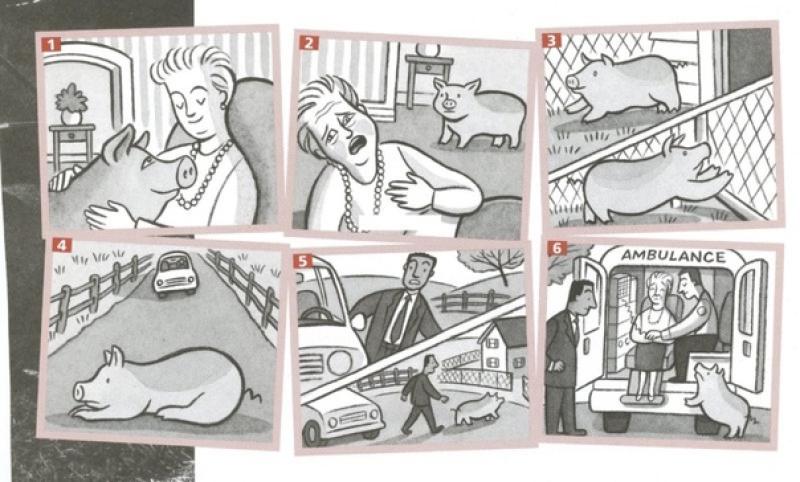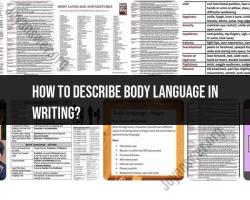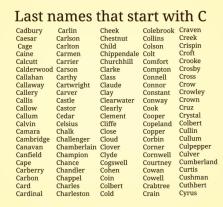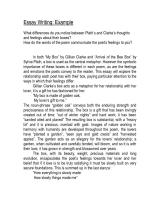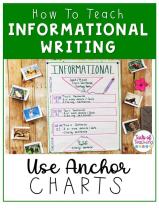How to write a picture prompt story?
Writing a story based on a picture prompt can be a creative and engaging exercise. Here's a step-by-step approach to crafting a story using a picture prompt:
1. Observe the Image
- Study Details: Look closely at the image. Note characters, settings, emotions, objects, and any other details that stand out.
2. Create Characters and Setting
- Character Development: Imagine who the characters are, their backgrounds, motivations, and relationships.
- Setting Creation: Build a world or environment based on the image. Describe the location, time, and atmosphere.
3. Outline the Plot
- Story Direction: Determine the storyline or plot. What might be happening in the image? What events could lead up to this moment or follow from it?
4. Use the Five W's and One H
- Who: Identify the characters and their roles.
- What: Determine the main event or conflict.
- Where: Describe the setting and its significance.
- When: Establish the time frame or period.
- Why: Explore the reasons behind the characters' actions or circumstances.
- How: Consider the manner in which events unfold.
5. Start Writing
- Opening Hook: Begin with a captivating introduction that draws readers into the story based on the image.
- Develop the Plot: Build the story, introducing conflicts, character interactions, and progression.
- Show, Don't Tell: Use descriptive language to paint vivid scenes and evoke emotions.
6. Build Suspense or Tension
- Conflict Development: Introduce challenges or obstacles that drive the story forward.
- Create Curiosity: Leave room for unanswered questions or mysteries to keep readers engaged.
7. Resolve the Story
- Climax and Resolution: Build up to a climax where conflicts reach their peak, followed by a resolution that ties up loose ends or provides closure.
8. Editing and Revision
- Edit for Clarity: Revise the story for coherence, grammar, spelling, and overall readability.
- Refinement: Polish sentences, dialogue, and pacing to enhance the story's impact.
Example (Using an Image of a Deserted House):
Start by envisioning who might have lived there, why it's deserted, and what could happen next. Develop characters, plotlines, and emotions around this setting to create a captivating story.
Remember, the image serves as inspiration, but the story you craft around it is entirely yours. Let your imagination flow and explore various possibilities to create a compelling narrative.
What are effective techniques for crafting a story from a picture prompt?
Crafting a captivating story from a picture prompt requires creativity, imagination, and a willingness to delve into the depths of the image. Here are some effective techniques to help you turn a picture into a compelling narrative:
1. Deconstruct the image:
- Analyze the elements: Start by closely observing the picture and identifying its key components. Who or what is present? What is the setting? What is the mood or atmosphere?
- Ask questions: Generate questions about the picture's elements. What is happening in the scene? What are the characters thinking and feeling? What led to this moment? What is the story behind the image?
- Identify potential conflicts: Look for hints of tension, problems, or challenges within the image. This will help you develop a plot and narrative arc for your story.
2. Engage your senses:
- Go beyond the visual: Don't just describe what you see; use your senses to imagine what you might smell, hear, taste, and touch in the scene. This will add depth and immersion to your narrative.
- Use vivid language: Employ descriptive language to paint a picture with words. Instead of saying "the man was sad," describe his slumped posture, the furrowed brow, the downcast eyes.
- Create sensory details: Include details that appeal to the reader's senses, like the sweet scent of pastries, the rough texture of stone, the chilling wind on their skin.
3. Establish your characters and their motivations:
- Give life to the characters: Breathe life into the characters depicted in the picture. What are their names, personalities, and goals? What desires and fears drive them?
- Explore their relationships: Consider the relationships between the characters in the scene. Are they friends, enemies, strangers? How do they interact with each other? What are their dynamics?
- Develop their backstories: Imagine the characters' lives before the moment captured in the picture. What experiences have shaped them? What baggage do they carry?
4. Build a plot and narrative arc:
- Identify the inciting incident: Determine the event or moment that sets the story in motion. What triggers the action and forces your characters to react?
- Develop the conflict: Create obstacles and challenges that your characters must overcome. Consider both internal and external conflicts that drive the narrative forward.
- Structure your story: Follow a basic story structure with an introduction, rising action, climax, falling action, and resolution. This provides a framework for your narrative.
5. Utilize literary devices:
- Show, don't tell: Instead of explicitly stating emotions or motivations, use actions, dialogue, and descriptions to show them through the characters' behavior and interactions.
- Use figurative language: Use metaphors, similes, and other figures of speech to add depth and imagery to your writing.
- Employ foreshadowing and symbolism: Plant clues and hints throughout your story that hint at future events or add deeper meaning to the narrative.
6. Get feedback and revise:
- Share your story with others: Get feedback from friends, family, or writing groups to identify areas for improvement and refine your narrative.
- Read your story aloud: Reading your story aloud can help you identify awkward phrasing, inconsistencies, and areas that need further development.
- Revise and edit: Be willing to revise and edit your work. Refine your language, tighten the plot, and strengthen your characters to create a polished and compelling story.
Bonus tips:
- Don't be afraid to experiment: There are no strict rules for crafting a story from a picture prompt. Feel free to experiment with different narrative techniques and find what works best for you.
- Draw inspiration from other stories: Analyze stories you enjoy and see how they use various techniques to create a captivating narrative.
- Have fun with it!: The most important thing is to enjoy the process of creating a story from a picture prompt. Let your imagination run wild and have fun exploring the possibilities.
